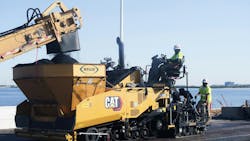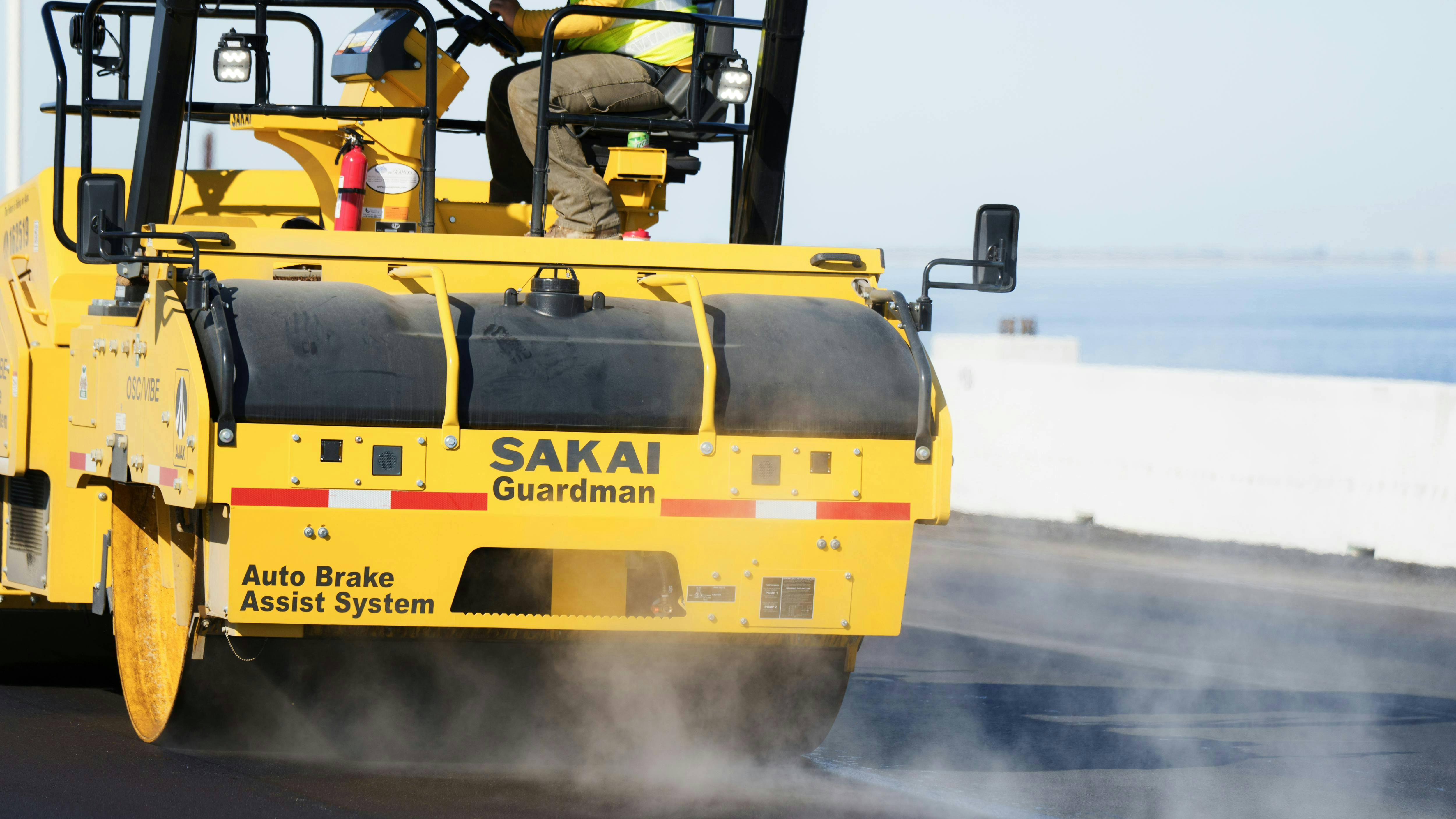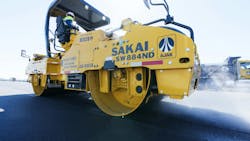Software Speeds Continuous Improvement for Ajax Paving
Key Highlights
In this article, you will learn:
- How to use maintenance software to identify root causes.
- How to identify critical parts.
- How communication improves field service efficiency.
- How to reduce mean time between repairs.
“I believe that leading the way in technology will help us win,” says Dan Maitland, CEM, fleet manager for the 2025 Construction Equipment/AEMP Fleet Masters Award winner Ajax Paving of Florida.
To that end, Ajax has fully embraced its construction management software (B2W) and experienced a myriad of benefits, particularly in work orders, parts inventory, and scheduling service, and it has helped them save time and money.
(Maitland talks about how Ajax has customized B2W Maintain in the video at right.)
“[This is technology], in terms of real-time insights into what parts we’re ordering and what machines are seeing multiple occurrences via the same part within a certain period of time,” Maitland says. “For instance, if we’re having a recurring parts order every 90 days, we start drilling in and looking for what other issues might cause the occurrence.”
Technician-driven app
All Ajax Paving technicians have an app to order parts that filters the order through centralized purchasing at the company’s warehouse. An inventory control specialist and an assistant then check the Ajax inventory.
“We have one main warehouse that houses 95% of our inventory, and each of our satellite shops have small inventories as well as fast-moving parts,” Maitland says. “If we don’t have it in-house, then we can push a button, and either have our mechanics submit it out for a bid, like ‘Hey, I need XYZ,’ and then it can go straight to the Caterpillar dealer, or, NAPA or pick any vendor if they’re busy.
“The idea is to put in the request and let them move on with their day,” Maitland says. “Usually, we want mechanics to just focus on fixing equipment.”
If there are judgment calls to be made, there is the opportunity to submit a picture or other relevant information so the parts procurement team can do a more accurate job.
“The communication is reducing inefficiencies of the wrong parts being ordered and showing up,” Maitland says. “Is it the whole kit, or do we just have to replace what’s actually broken in the picture?”
Ajax has piloted semi-autonomous wheel loaders at a company asphalt plant. Maitland explains in the video at right.
When a foreman or operator calls in a repair request, Ajax will sometimes send a mechanic to inspect the problem.
“If they don’t put in a lot of information, or a picture or video, now I’m requiring a skilled mechanic to go verify before we just start ordering parts that operator says we need,” Maitland says. “We can see the inefficiencies; we’ve made that mistake before. So there’s the communication that we identified we needed to work on.
“Now, if a mechanic goes out to a job site and inspects, he’s either verifying it’s good, order it and send it, or we need additional things,” Maitland says.
“By using digital ordering processes and improving communication, we’ve found we’ve reduced the number of inspections needed by a mechanic,” Maitland says.
“If we can reduce a couple trips a week by a mechanic, he can be more productive with is time versus going to inspect something that could have been solved with a photograph or just a little bit more communication.”
Even his longest serving techs like the system.
“One reason they like it is they get real-time feedback on the app,” Maitland says. “When they order a part, they can pull the order back up and see where it’s at in the process. Is it in transit? Is it going to be here tomorrow or Thursday?
“That’s a challenge in our industry because we rely on so many different vendors to fulfill orders,” Maitland says. “There’s also an option within our app that’s like an Uber Eats delivery, where we can order something and have a courier bring it out. Instead of hiring parts runners at every location, we can courier things.”
Inventory changes
The company’s parts inventory has been changed and streamlined, as well.
“I think historically as an industry, we tend to be hoarders, or we keep a lot of things in our buildings or conex boxes for a ‘just in case’ situation,” Maitland says. “By reviewing weekly, and especially monthly, inventory levels, we have found we were overstocking.
That’s one thing I found on the key categories. We were overstocking on things because we were scared.”
Ajax’s due diligence in parts resulted in an inventory reduction of $100,000 out of a total inventory of about $500,000. “By looking at the history we could say, ‘You used this six times last year, why do you have 20?’” Maitland says.
“You can scientifically reduce the amount on hand because it costs money to store parts. People don't think about that, but it takes carrying costs and shelving; there’s also the lost opportunity of putting something else in its place,” Maitland says.
The parts that were no longer in inventory allowed Ajax to offer more line items.
“That was a big ‘aha’ moment, taking the inventory down from $500,000 to $400,000, yet increasing 100-and-something line items,” Maitland says. “We reduced overhead, but we were able to somehow increase our service level. Kind of mind blowing.”
Mean time between repairs
Although the company’s measurement of mean time between repairs involves more factors than parts, they did play a role.
“By having the right parts on hand, our average time to close out work orders was reduced,” Maitland says. “And we are closing out work orders quicker because we are now offering more parts.”
Ajax put even more thought into its parts strategies based on time factors—and it may even help during real or perceived tariff pressure.
“We started focusing on lead times too, because our lead times to get parts are a huge deciding factor of what you want to keep on the shelf,” Maitland says. “If you can run down to your local store and get it same day, or if you have a small vendor that's dropping stuff off to your shop a couple times a day, you might not need to keep it on your shelf. If it's the stuff that is going to take 14 days or God forbid any longer, then you're going to want to keep an extra one or two on a shelf.”
Maitland has set up a ranking system to identify the more critical parts.
“You have to look at what category of equipment keeps your operations running,” he says. “For us, it’s the asphalt paving equipment, and we're going to treat the paving train to a higher degree. We call that ‘Class A.’"
Overall, the software and streamlined systems have helped company wide.
“The biggest thing for us is visibility,” Maitland says. “We want visibility into our operations, whether its VPs [looking] or shop foremen. We now have scheduling information, too, where we can pull up our mechanics and see the schedule from every geographic area. The work orders can be dragged and dropped and read like a book, so we know what our guys are doing and whoever logs in the computer can see it.”
Maitland says a second benefit is better reporting.
“How are we doing on our PMs? It needs to be reportable in that anybody can run a report,” he says. “We're not waiting on one person who could be out sick and has a spreadsheet on their computer.
“It’s all about access, the access to information,” Maitland says.
About the Author
Frank Raczon
Raczon’s writing career spans nearly 25 years, including magazine publishing and public relations work with some of the industry’s major equipment manufacturers. He has won numerous awards in his career, including nods from the Construction Writers Association, the Association of Equipment Manufacturers, and BtoB magazine. He is responsible for the magazine's Buying Files.




